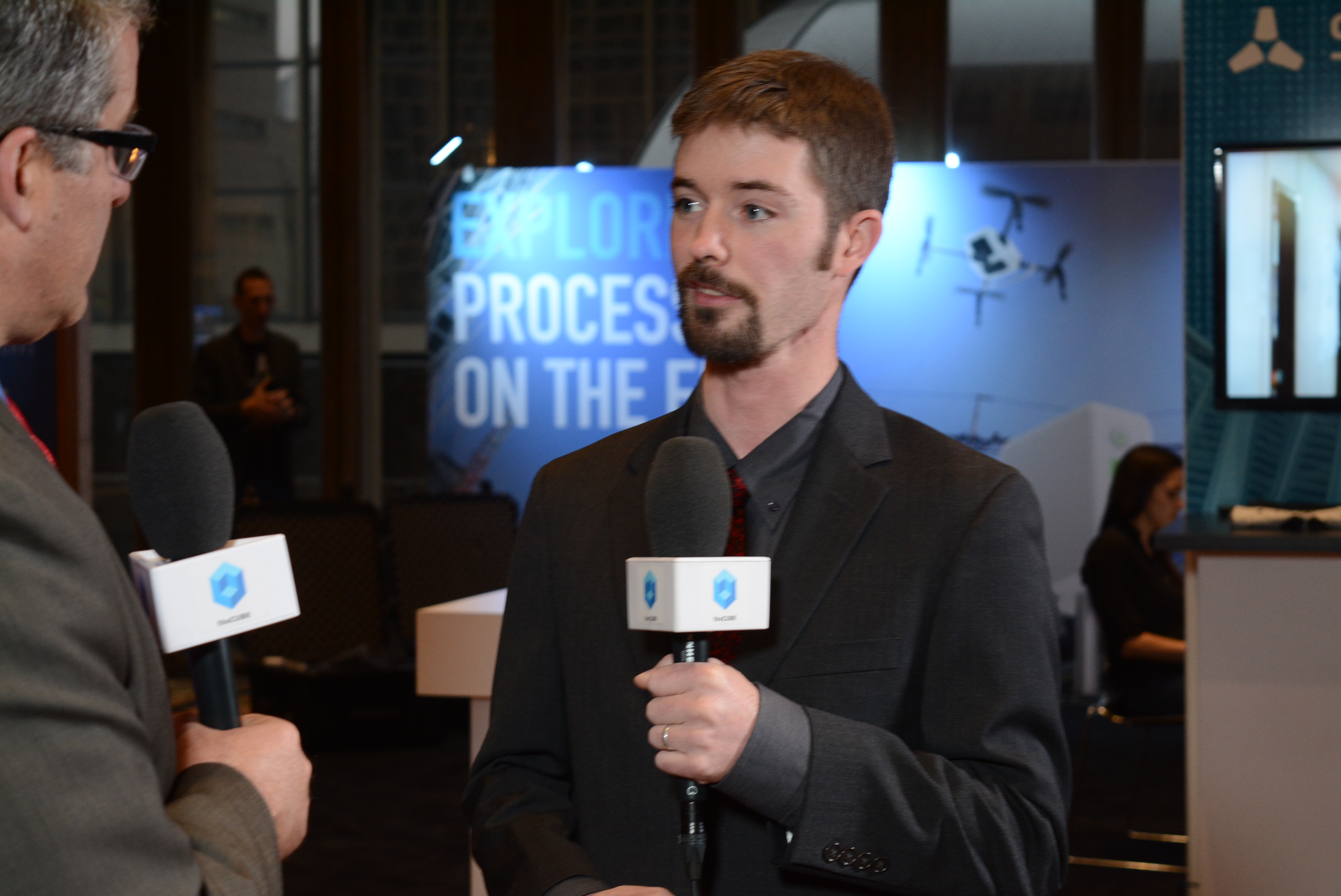 EMERGING TECH
EMERGING TECH
 EMERGING TECH
EMERGING TECH
 EMERGING TECH
EMERGING TECH
The explosion of drone technology use across industries has prompted leaders in the space to rapidly develop new varieties of copters to fit a range of enterprise needs. Setting standards for consumer and commercial customers alike, Chinese drone-maker DJI (Dà-Jiāng Innovations Science and Technology Co. Ltd.) recently added two new drones to its enterprise offering, the Wind Series 4 and Wind Series 8.
Chris Boots (pictured), chief engineer at Quadrocopter LLC, has been using DJI’s products with the company through its growth period.
“When Quadrocopter began almost a decade ago, we prided ourselves on delivering custom-tailored systems to various different customer needs, so we felt right at home when DJI unveiled the Wind Series,” Boots said. Quadrocopter shares these heavier-duty, more easily customizable drones with enterprise customers.
Boots spoke with Jeff Frick (@JeffFrick), co-host of theCUBE, SiliconANGLE Media’s mobile livestreaming studio, during the AirWorks 2017 event in Denver. They discussed drone tech advancements at DJI and how these innovations are benefiting business processes.
DJI’s newest releases in the Wind Series are universal platforms that give customers customization flexibility from sensor type to payload, removing the limitations imposed by other models, according to Boots. This blank-slate approach enables businesses with a range of needs to take advantage of drone technology.
One of Quadrocopter’s enterprise customers is using drone tech to innovate the work of methane pipe inspection, improving efficiency and safety by incorporating drones into its process. “Pipelines need to be inspected every six months per governmental regulation. Currently, the only way most companies … are doing this is by foot, by ATV, with handheld sensors, or on a large scale with rotocraft-like helicopters and people hanging off the sides of them,” Boots said.
In an effort to remove the high risk in this work and reduce the skewed data that often results from thermal-based sensors, Boots and his team developed a drone and sensor combination tool that wouldn’t be influenced by external environments. “We officially landed on a laser-based methane detector and paired that with the Wind 8, which then flies the pipeline route in 10- to 20-mile segments,” he said.
The data collected by these sensors is used in mapping software to determine where there may be leaks in the pipeline so an inspector can be sent directly to the problem area. “It totally gets rid of the whole safety issue … and the expensive manpower of walking a pipeline. We can do it more efficiently and safely, and we get better results,” Boots said.
For businesses interested in improving their work with drones, Boots is excited to help them innovate with Quadrocopter and DJI. “It all starts with an idea. … [We] basically take their idea [and] our resources — whether it be DJI or third-party integrations — and make their dream a reality,” he concluded.
Watch the complete video interview below, and be sure to check out more of SiliconANGLE’s and theCUBE’s coverage of the AirWorks 2017 event.
THANK YOU